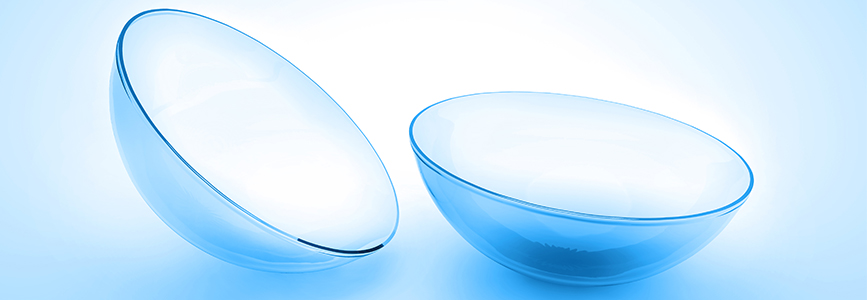Contact lenses are a medical device that are applied to the eye surface for the purpose of vision correction. Like glasses, contacts can correct most refractive errors, and in cases of certain eye surface diseases, can offer better vision than glasses. Contact lenses can be the main form of vision correction, or used as an enhancement of activity or lifestyle.
 As a medical device, it is of great importance to have a complete medical eye exam with a contact lens fitting to determine the correct contact lens for your eyes. The eye doctor can guide you to appropriate contact choices for your lifestyle and needs, while accurately fitting the best size, shape, and material to ensure good comfort, and maintain ocular health. Age is not necessarily a restriction to begin contact lens wear, but proper motivation and responsibly are important factors to ensure a positive experience. The doctors and staff will instruct you in proper care and use of your contacts, wearing time, and safe disposal intervals compatible with your lens design and care system. This ensures good ocular health for the future and limits possible infection risk.
As a medical device, it is of great importance to have a complete medical eye exam with a contact lens fitting to determine the correct contact lens for your eyes. The eye doctor can guide you to appropriate contact choices for your lifestyle and needs, while accurately fitting the best size, shape, and material to ensure good comfort, and maintain ocular health. Age is not necessarily a restriction to begin contact lens wear, but proper motivation and responsibly are important factors to ensure a positive experience. The doctors and staff will instruct you in proper care and use of your contacts, wearing time, and safe disposal intervals compatible with your lens design and care system. This ensures good ocular health for the future and limits possible infection risk.
Contact lenses are available in many formats with multiple designs within those formats to correct for most vision imperfections. With careful measurements for good fit, and discussion of the contact type and function, most patients can achieve contact lens fit that will enhance their lifestyle and visual needs.
Contact Designs:
- Soft – (most popular) due to easy adaptions
- Sphere – for nearsightedness or farsightedness
- Toric – for astigmatism
- Multifocal – for when we need reading help
- Color – for cosmetic change
RGP (Hard Contact Format)
- also available as sphere, toric and multifocal
- often the choice for higher prescriptions
HYBRID (RGP center and soft surround)
- available as sphere and multifocal
- can give better acuity like RGP, but with possibly better comfort like soft.
SCLERAL (and mini scleral designs)
- very large RGP – available as sphere and multifocal
- often used for corneal surface diseases that can limit acuity in a soft format
There are quite a few contact lens choices available, and with consultation with the doctor, most people can find a design that can enhance their life. Some eye conditions can limit or prohibit contact wear, which is why a comprehensive eye exam is an important component to fitting contact lenses. Also, when wearing contacts, adverse reactions can occur, and contact wear should be discontinued until consulting an eye doctor.
Conditions that can prevent or limit contact wear:
- Eye Infections
- Severe Allergies
- Severe Dry Eyes
- Very Dusty/ dirty work environment
- Inability to handle or care for contacts properly
Discontinue contact wear immediately if you experience:
- Red, uncomfortable eye
- Significant discharge
- Pain
- Blurred vision
- Unusual light sensitivity
Contact lenses are not right for everyone, but for a motivated and responsible candidate, contacts can enhance their life. With a comprehensive eye exam, proper fitting, clear instruction in wear and care, and the right contact lens for their desires and needs, contacts might be the right choice.
